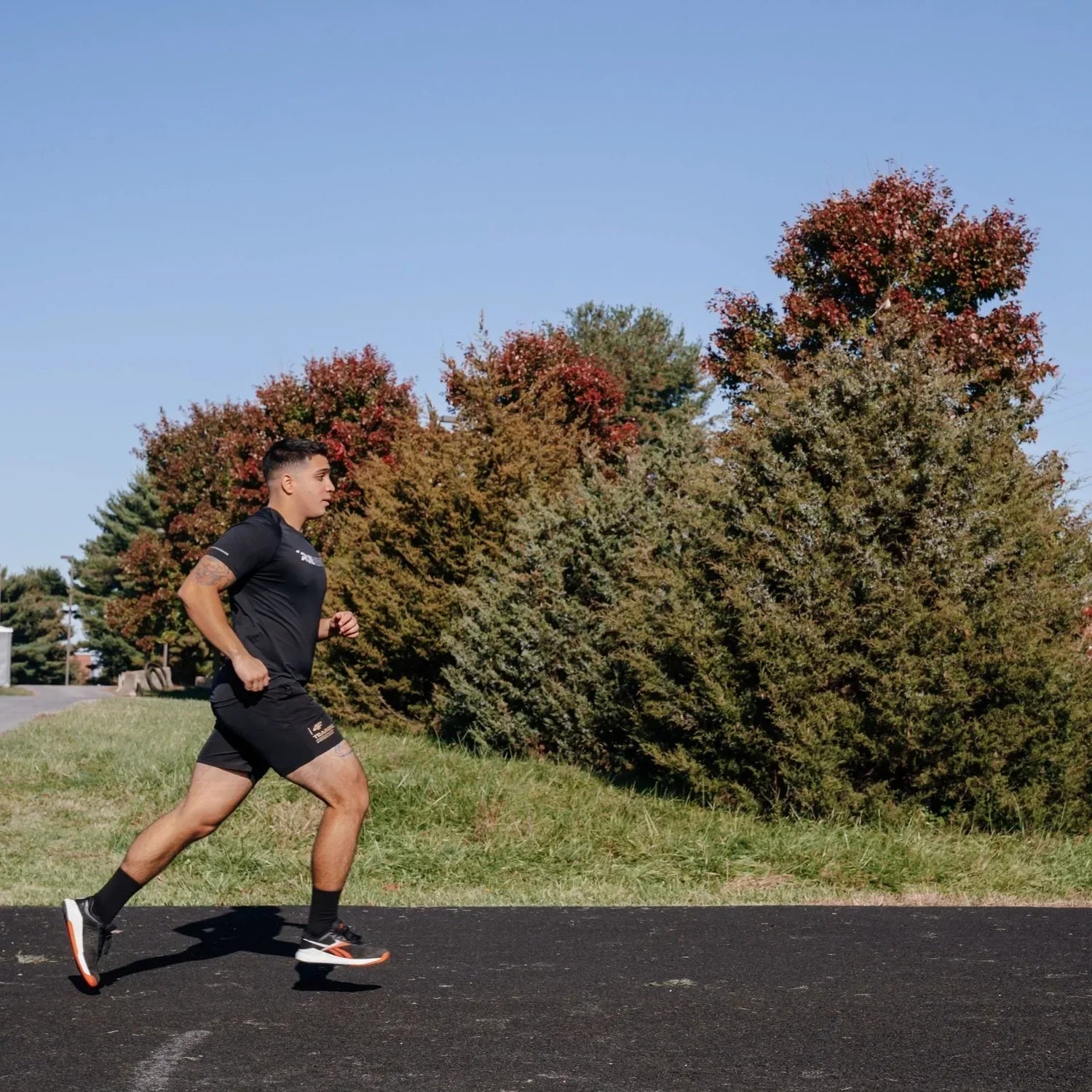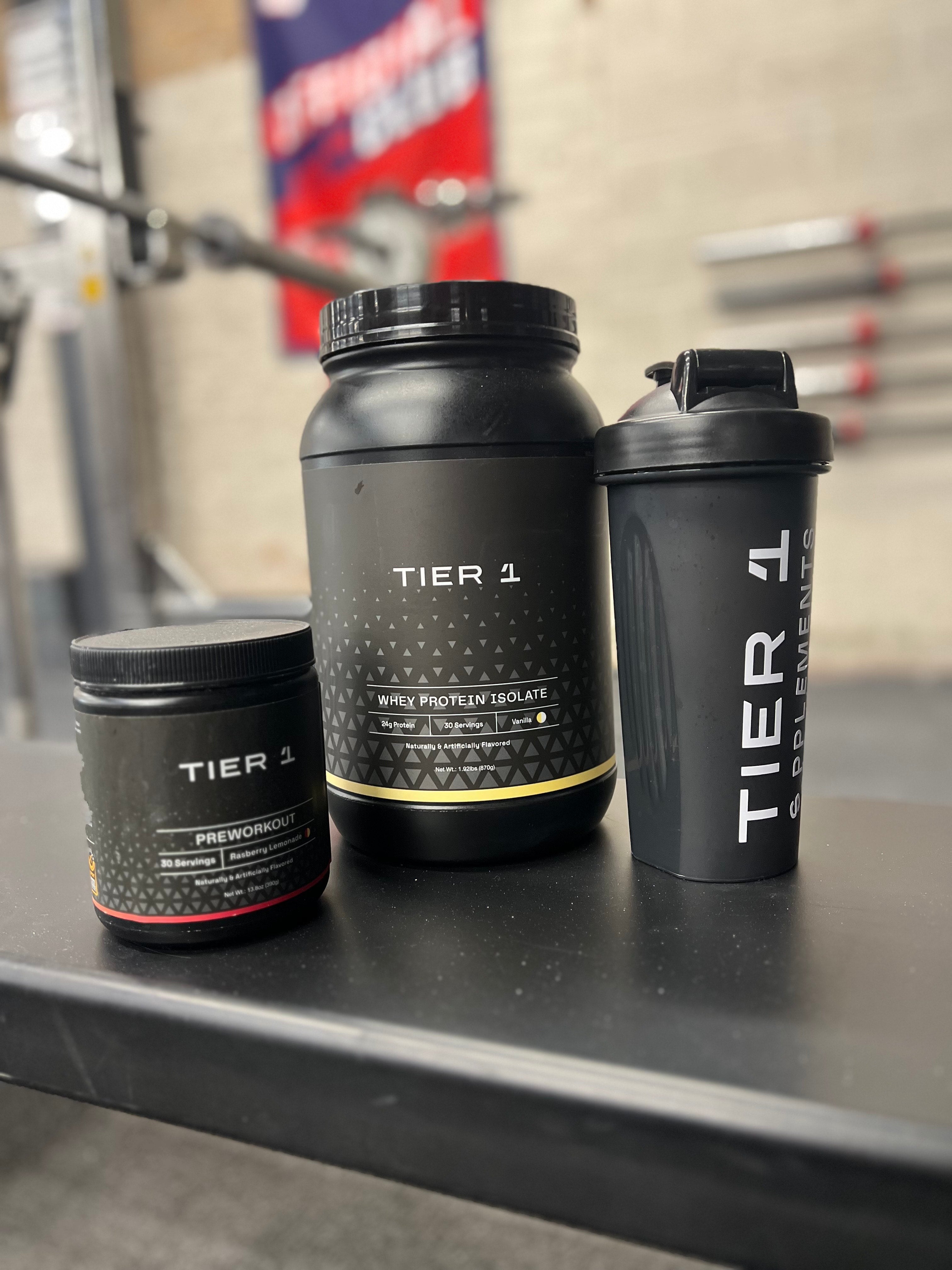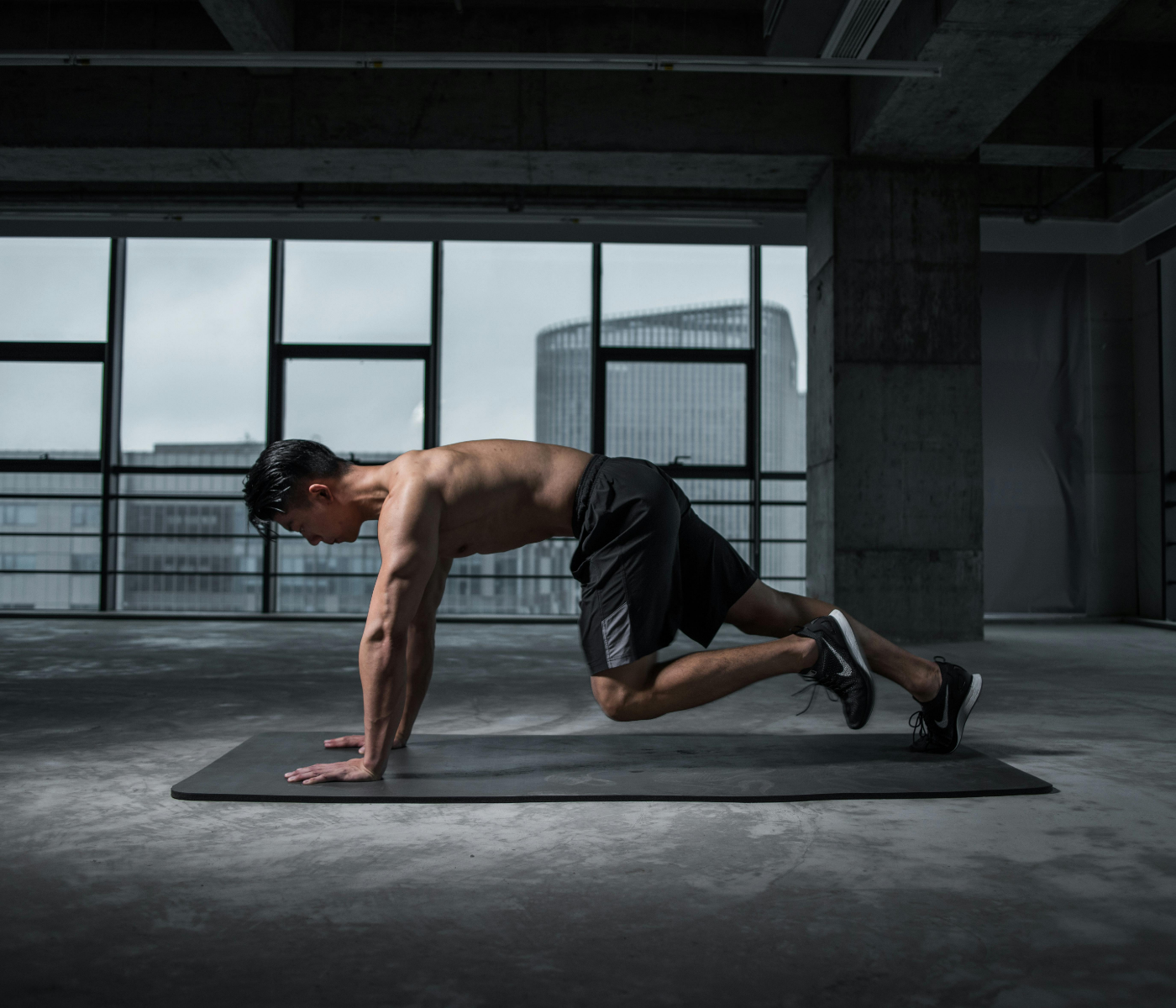Introduction
I’ll put the bottom line up front here, we have created an electrolyte and carbohydrate supplement that is meant to be used as an intra or post workout beverage, depending on your goals. As a company, we would love for thousands of people to buy this product, but in the name of full transparency, it is equally important for us to inform the consumer exactly who would benefit from our products. So in this article, we will break down exactly how to know whether this product will be useful for you.
Before we get into that, this is what is in the product:
- 430mg sodium
- 120mg Potassium
- 30g carbs in an optimal 2:1 glucose:fructose ratio
Like all our products, it is Informed Sport certified free of banned substances.
Without further ado, let’s talk about who this is useful for.
Most People Don’t Need More Electrolytes
I know this is a strange take for a company trying to sell you an electrolyte supplement, but hear me out.
You can’t swing a dead cat in the supplement industry these days without hitting some sort of electrolyte supplement. While it is true that the proper maintenance of electrolytes is extremely important, especially for athletic performance, I think we’ve gotten a little carried away. It has become extremely fashionable nowadays for people to start their day with an electrolyte supplement for the sake of “hydration” regardless of whether or not they are actually going to have considerable electrolyte losses from sweating that day. For many supplements, assuming they are third-party tested, taking them when you don’t need them presents no harm aside from a possible waste of money. However, electrolytes, sodium in particular, is not something we should be blindly adding to our diets. Despite the claims of some electrolyte suppliers, the general population would benefit from an overall reduction in sodium consumption for overall health. If you want my full breakdown of these claims (from that electrolyte company) and why they are not supported by the science, click here.
I am not saying nobody needs an electrolyte supplement, but I am saying we need to be much more mindful with this decision. To determine whether you need an electrolyte supplement, you need to be able to answer these questions:
A. What is your daily sodium intake?
This is the easiest part, simply track your food intake in any food logging app and see where you typically fall.
B. How much sodium are you losing through sweat that day?
There are two steps to getting this number. Step one is determining what your fluid loss rate is during your chosen exercise. You can do this by weighing yourself before and after a session, with the weight difference being your fluid loss.
Step two is determining the sodium content of your sweat. Some people lose much more sodium per liter of fluid loss than others. The more accurate method is to get a sweat test done like this one to get an individualized number. If you cannot do that, we can use averages from the research to get a baseline. Just understand that this might be pretty far from your actual sodium loss rate if you are more or less salty than average, but it is a good start. If you are doing this, 760-800mg of sodium per L of fluid loss is about the average.
C. What is the baseline recommended intake?
Most major organizations recommend somewhere between 2000 and 2300 as the upper recommended limit of daily sodium intake. For active individuals consuming a mostly non-processed diet, we can use this as our baseline intake.
With that information, you can determine your supplementation needs from the following formula:
B+C – A = Supplementation requirement
If you get a negative number from the above formula, you are not a good candidate for an electrolyte supplement and the rest of this article will not be useful to you. If you got a positive number, this product may be just what you need.
You Need Carbs Too (Probably)
An electrolyte supplement without carbs does not make a ton of sense in most cases. If you are working hard enough to need electrolyte replenishment, odds are that you would also need some carb replenishment as well. There are a few cases where this may not be the case, and an electrolyte-only supplement could be justified:
- Your diet is naturally high in carbohydrate but very low in sodium, AND you are not needing to replenish glycogen stores quickly or consume carbs during your session.
- You are exercising at relatively low intensities, but in a very hot or humid climate. This could lead to electrolyte depletion that far outpaces the need for extra carbohydrate.
- You are purposefully restricting carbohydrate as part of a nutritional periodization strategy. More on that here.
If you do not fall into one of those scenarios, it probably makes sense to include carbohydrate with your electrolyte supplement since you are usually depleting both with exercise. The examples we will go through in this article are:
- Endurance Athletes. Any sort of endurance athlete, as an intra-session fuel or post-session beverage to quickly replenish electrolytes and glycogen.
- Functional Fitness / Team Sports. CrossFit, Hyrox, and team sport athletes as an intra-session fuel for long and more intense sessions, or post session when multiple workouts are completed in a day.
- Lifters. As an intra-session fuel for high-volume sessions. While potentially useful, this has the weakest evidence, more on that later.
The evidence and application for carbs and electrolytes on performance varies among these scenarios, so let’s break down these use cases and determine who may benefit the MOST.
Endurance Athletes
For the purposes of this article, we will be broadly defining an endurance athlete as someone engaging in continuous, monostructural, submaximal exercise for over 30 minutes. This includes things like running, rowing, biking, swimming, etc. Out of the athlete types we cover here, the endurance athlete will benefit the most from this product.
Electrolytes
Fluid and electrolyte losses during endurance exercise vary considerably between individuals and are highly affected by factors such as temperature and humidity. They can be pretty extreme, with documented cases of athletes losing over 4L per hour of fluid and 7g of sodium in a single session. While some may use these specific cases as a basis to recommend outrageous sodium intakes, the more reasonable approach would be to start with population averages and work your way to an individualized approach from there. For that, we can look at this paper which compiled data from several studies and found an average fluid loss rate of about 1.18L per hour, and sodium loss rates of 843mg per L of fluid loss, or 990mg of sodium loss per hour for endurance athletes.
Based on these numbers, and considering how long endurance sessions can last, you can see how the electrolyte losses can start to rack up even in non-extreme scenarios. For this reason, electrolyte supplementation instead of plain water intake can be really crucial for this population to avoid the potential harmful effects of hyponatremia.
Carbohydrates
Few things in exercise science have been studied as extensively as the role of carbohydrates for endurance athletes. It is extensively documented that starting a session with high carbohydrate availability, and continuously consuming carbohydrates during the session (up to 90g/h) are beneficial for performance in practically every endurance sport.
For this reason, there are a few key ways we can use a carbohydrate supplement to support performance:
1. To increase total daily carbohydrate intake. This can be useful if you have difficulty hitting daily carbohydrate requirements through normal food alone.
2. To quickly replenish glycogen stores between training sessions. This is particularly important if sessions are close together (<24hrs) and restoring glycogen through normal feeding is no feasible.
3. To consume during a session to delay the depletion of existing glycogen stores. As glycogen becomes depleted during a session, performance slowly starts to degrade. Consuming additional carbohydrates gives your muscles continued fuel without having to tap into the stored carbohydrates in your muscles and liver as much.
Lifters
For this section, I want to talk about the average gym goer who does traditional resistance training, doing a variety of exercises and resting between sets. This “normal” lifting is unlikely to produce huge amounts of fluid loss or extreme glycogen depletion, at least when compared to endurance training. However, it is still worth considering if additional electrolytes and/or carbohydrates might be useful.
Electrolytes
The rationale for electrolyte supplementation for this group usually goes a little something like this:
1. Electrolytes are involved in excitation-contraction coupling (the process of muscles contracting).
2. Electrolytes are lost in sweat that occurs during lifting sessions.
3. Low electrolyte levels cause weakness and fatigue.
4. Therefore, we must drink electrolytes during a lifting session to avoid this weakness and fatigue.
Points 1-3 are indeed true, but does that make point 4 also true?
For starters, we need to consider whether the magnitude of electrolyte loss is great enough for electrolyte depletion to even be a concern. Unfortunately, there simply is not very much research looking at fluid and electrolyte loss rates in lifters. We know that hypohydration (negative fluid balance) negatively impacts strength and power outcomes, but the research here looks at people beginning a lifting session in a dehydrated state, not at lifters becoming dehydrated due to intra-session fluid loss. When it comes to electrolyte balance, the little research that exists looking at the effects of hyponatremia on strength indicate that the degree of hyponatremia has to be pretty severe to significantly influence strength outcomes, and it is not likely that doing normal resistance training in a climate-controlled gym will cause that.
Since we cannot look to the literature for an answer here, you will have to go back to the formula at the beginning of the article and do some testing on yourself. If there is a deficiency identified there, is it large enough to cause a degree of hyponatremia that negatively impacts performance?
Due to this, electrolyte replenishment during or immediately after a lifting session is unlikely to be a useful pursuit unless your diet is very low in sodium and you are sweating a ton during your session. Even then, it is hard to be very confident that the degree of sodium loss impacts short-term performance. Therefore, for most lifters, consuming plain water should be just fine to maintain performance as it relates to hydration.
Carbohydrates
For most of the rep ranges we are dealing with in traditional resistance training (1-30 reps), carbohydrates are going to be the main fuel source that we use. However, do we really use enough stored glycogen for that depletion to be a real performance consideration?
The traditional view of this is, no, because single resistance training sessions only deplete muscle glycogen by 24-40%. However, this view assumes two things that may not be true:
1. Glycogen is depleted in the muscle across all fiber types uniformly during resistance exercise.
2. The relationship between glycogen status and lifting performance is like gas in a car, as long as you are not at 0% you can continue at similar performance levels.
These assumptions are not 100% accurate. The 24-40% depletion number comes from studies looking at whole muscle glycogen content. But we now know that the glycogen stored in certain locations within type 2 fibers are depleted at a much faster rate during resistance exercise. Further, there is limited evidence that glycogen depletion may reduce resistance exercise capacity, although the research is not great and very sparse.
So we are in a position now where we know that resistance training can reduce glycogen by a meaningful degree, and we know that glycogen availability is an important fuel source during resistance training, but we do not have good evidence showing that supplementing with carbohydrate immediately before or during a typical lifting session will increase performance. This is simply a limitation in the research at the moment, so we cannot confidently conclude anything at this point. Theoretically, the higher the intensity and the more volume conducted during a session, the greater the chance that supplementing with carbohydrate during the session will make a difference.
Functional Fitness / Team Sport Athletes
This type of athlete encompasses anybody whose exercise is characterized by intermittent bouts of high-intensity work (e.g. Crossfit, most team sports, etc) or moderate intensity sustained for a long period (e.g. Hyrox). These athletes are different from traditional lifters in that their chosen activities typically result in much greater fluid losses and glycogen utilization.
Electrolytes
Fluid loss rates among team sport athletes (particularly soccer, basketball, rugby) have been extensively studied, so we have something to work with here. It is common to see fluid losses exceeding 2% body weight in many of these sports, which is the typical threshold where dehydration-associated performance decreases are seen. Absolute amounts of fluid loss are highly variable due to the variety of temperatures these athletes compete in, but we see anywhere from 0.3L to 2.5L per hour. Due to this, electrolyte losses are likely to get into ranges where performance is affected (230-1920 mg sodium loss). Therefore, these athletes are good candidates for supplemental electrolytes either during or after a game/training session.
There isn’t a ton of research on Crossfit or other types of functional fitness athletes, probably due to the difficulty in standardizing a “Crossfit workout” for the purposes of a study. However, we can assume that fluid loss rates would be similar to team sport athletes competing in indoor conditions (~1.6L/h). Indeed, this study looked at 50 Crossfit athletes conducting a variety of WODs and found an average fluid loss rate of 0.74 L/h for the women and 1.6L/h for the men. If we use the sodium concentrations from this review, that amounts to 570-1220mg of sodium loss per hour.
Carbohydrates
High-intensity intermittent activity like we see in team sports and functional fitness, is primarily a glycolytic (carbohydrate using) endeavor. Unlike some endurance types, there is not a huge opportunity to increase reliance on fat as a fuel, which makes carbohydrate availability very important for performance. For example, the vast majority of the research into soccer players demonstrate that carbohydrates ingested at a rate of 30-60g per hour enhance at least one aspect of performance. Similar results are seen in other team sports when carbohydrates are ingested immediately before and/or during exercise, with post session ingestion quickening the rate of glycogen replenishment.
Functional athletes such as CrossFit competitors are in a similar boat, especially during competitions where they have to exert maximal effort during multiple WODs spread throughout a day. In these scenarios, rapid glycogen replenishment in between events is crucial for performance.
Who Would Benefit from This Product?
The below chart sums up how strong the evidence is for each of these athletic applications, and therefore what type of athlete would benefit the most from our product:




